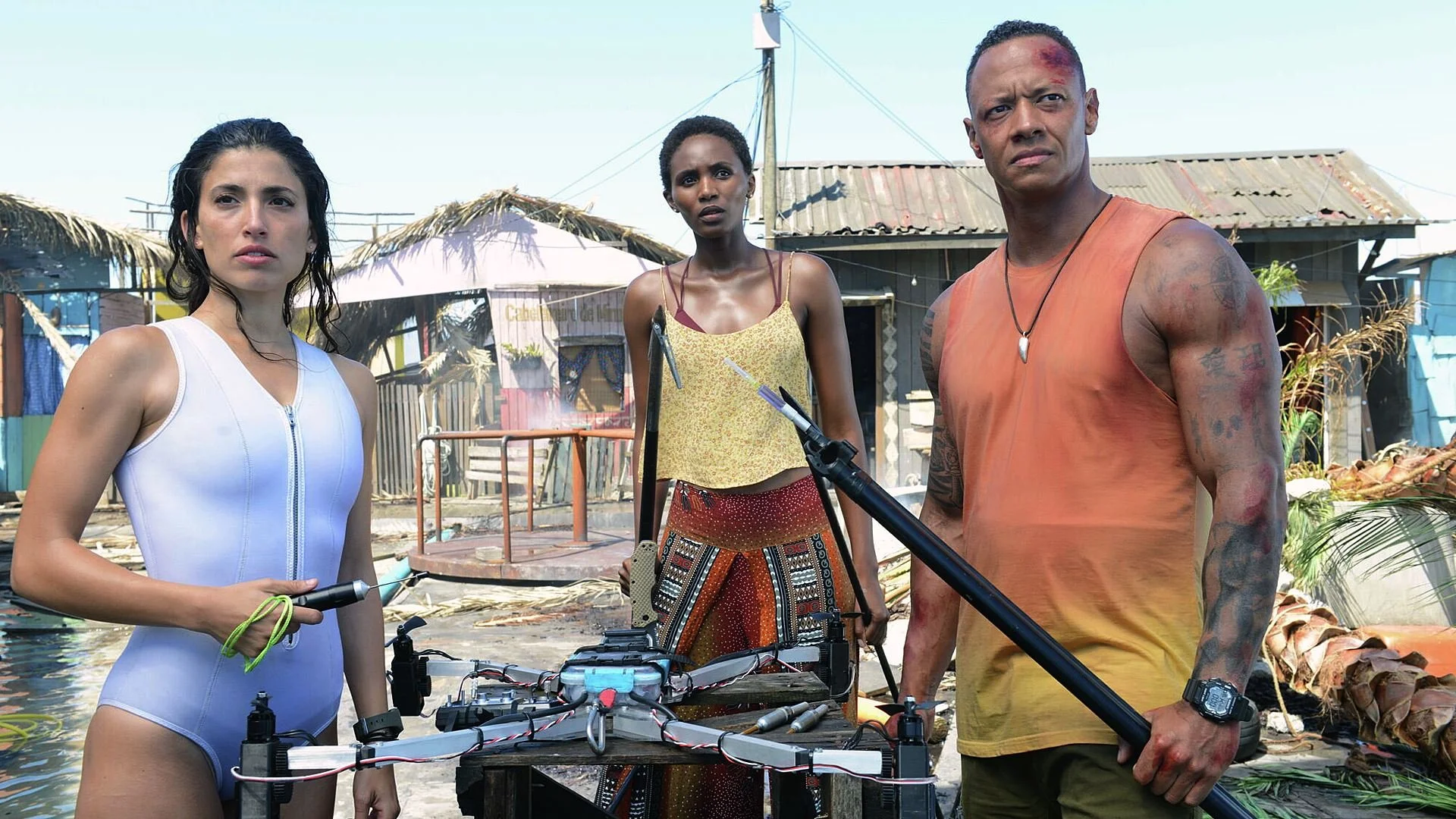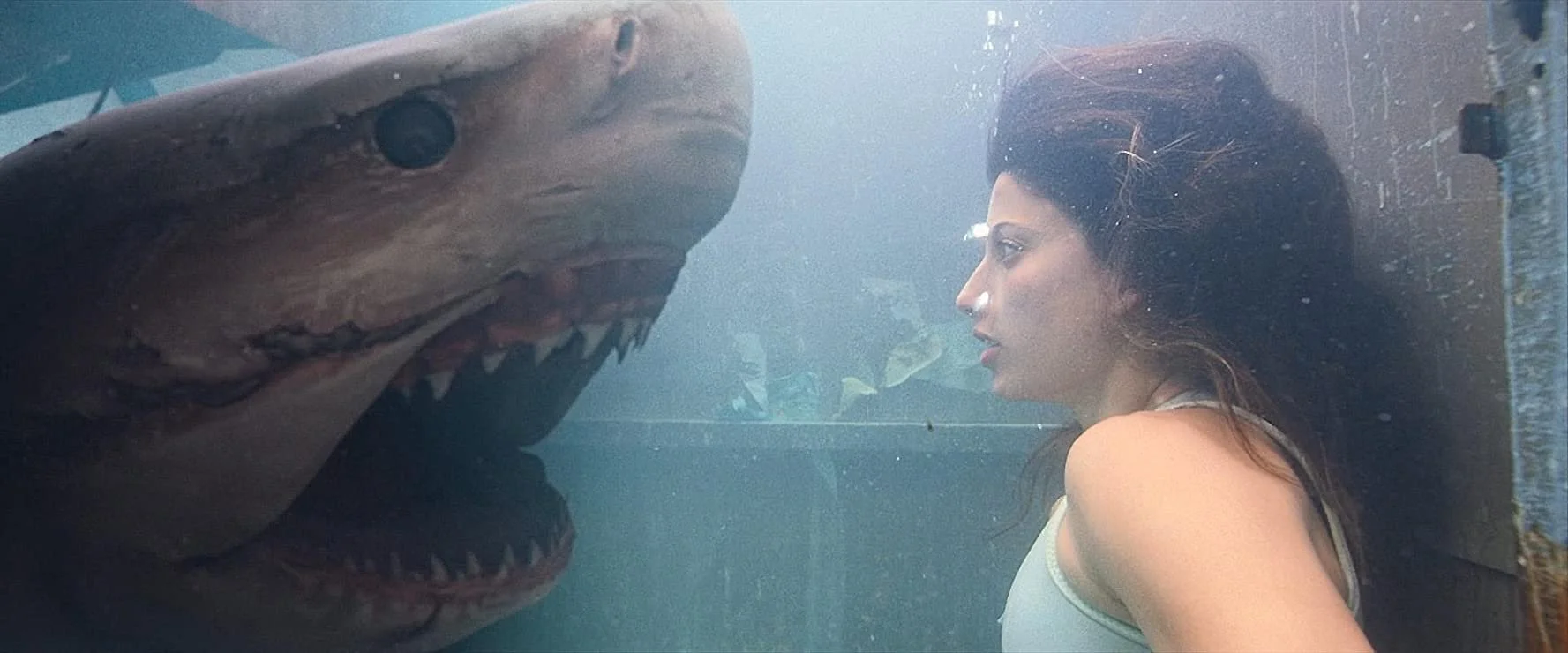Third Sequel in Deep Blue Sea Franchise Stays Afloat Despite the Current Against It
Originally published January 8, 2021
Title: Deep Blue Sea 3
First Wide Release: July 28, 2020 (Digital/Streaming Platforms)
Director: John Pogue
Writer: Dirk Blackman
Runtime: 99 Minutes
Starring: Tania Raymonde, Nathaniel Buzolic, Emerson Brooks
Where to Watch: Check out where to find it here
This third installation of the Deep Blue Sea franchise follows a group of researchers living on a manmade island floating off the coast of Mozambique studying the effects climate change has on marine life. One of the researchers is shocked to find an old colleague and ex-love affair visiting her out of the way of everything. Soon the group learns that he is being paid handsomely to retrieve three genetically enhanced sharks that escaped the research compound from the second film.
Deep Blue Sea 3 picks off exactly where the second leaves off which surprisingly works. Much of the criticism of the maligned second film comes from its hopelessly cynical modern interpretation of the first. It’s essentially a clone, which makes it incredibly boring to watch because it had all been done before it. Thankfully, Deep Blue Sea 3 recreates the same feeling as the original without resorting to the same formula. In fact, my biggest criticism of this film is that it tries to cram too many subplots into its screenplay. It makes for a bloated and oddly paced feature. I’ll never claim to watch a creature feature like Deep Blue Sea 3 for the plot, but I am glad that some effort was put into it.
The cast does solid work for a B-movie bringing their characters to life with varying degrees of success. They can certainly be melodramatic, but I found the chemistry between Miya (Reina Aoi) and Spinnaker (Alex Bhat) to be endearing and relatable. I found Lucas (Bren Foster) to be an unrealistic and cartoony villain, even for this kind of movie. After going postal, Lucas gave his victims multiple chances to escape and often lacked the follow-through to finish a fight. For someone painted as domineering and cold, it doesn’t work for me.
It is no artistic masterpiece, but Deep Blue Sea 3 has a more polished and artistic veneer than most genetically engineered fish movies typically apply. The setting is really inspired and full of neat little areas that make for some fun action sequences: the island sinking, the trash compactor, and the bar all come to mind. It adds to the movie’s charm. I’m a sucker for any horror movie that takes place entirely during the day or entirely in water. Absolutely beautiful shots of the coral reef are taken and interspersed, particularly at the beginning, throughout the film. A favorite trope of mine is comparing nature’s beauty against its terror. So, Deep Blue Sea 3 gets some extra points for that.
Surprisingly, Deep Blue Sea 3 displays basic proficiency with most technical aspects of filmmaking. The effects are on par, if a little inferior, with the first, which makes it miles ahead of the awful second film. The sharks still engage in ways that are physically not possible: swimming backward, making noises, etc. This seems to be a recurring characterization and effects issue in the series, but also most killer shark movies in general, so at this point, we know that it’s bunk. Then again, if we were looking at realism in shark behavior, the concept of killer sharks would go against that since sharks mostly avoid humans. It still feels necessary to share.
Unexpectedly effective and fun, John Pogue steers Deep Blue Sea 3 into a fun piece of summer shark schlock that doesn’t skimp on scares or take itself too seriously. I found myself thrown off by multiple death sequences, which are normally fairly predictable in the subgenre. My biggest complaint is that Pogue could have trimmed it a bit to be a leaner and more focused feature. It doesn’t take away the experience I had, but it would have been ideal. Pogue strikes a great balance between camp and thrills and against most logic creates a solid sequel to a once forgotten treasure of the 1990s.
Following the trend of the Deep Blue Sea films, this feature continues the time-honored tradition of warning against playing God while giving a nod to climate change in the process. Much less heavy-handed than the first two, Deep Blue Sea 3 understands exactly what the audience came to see. Climate change, the power of big pharmaceutical companies, and ethics in science are mere passing thoughts in this film. In fact, there is much less pondering of the ethical implications of the film than the original which is a bit disappointing. I would have loved for Deep Blue Sea 3 to explore that further, but I am sure that was cut out for the equally important random homicidal maniac subplot thrown in at the end.
Honestly, Deep Blue Sea 3 is better and more fun than it had any right to be. Boasting a few genuine scares and some decent production quality, it already has more going for it than most killer shark movies can say. It is an entertaining B-movie with likable characters that doesn’t quite capture the nostalgia from the original but offers enough interesting material to justify its place as a sequel in the franchise. Fans of the first should absolutely check it out, anyone else can take it or leave it for the fishes.
Overall Score? 6/10


